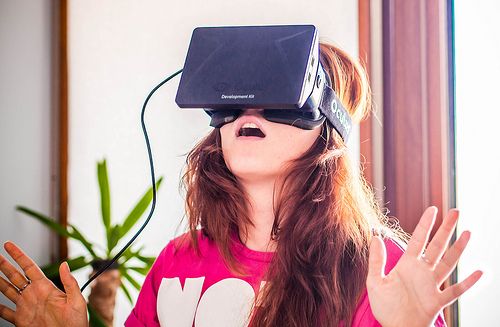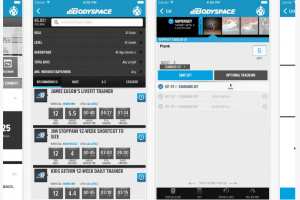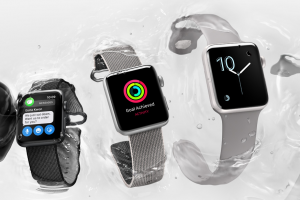The next generation of computer gaming is already here, according to technology experts. Thanks to virtual reality headsets such as Oculus Rift and biofeedback systems, players can now experience games on a whole new level.
Indeed, one of the standout computer games of the last few years is the Steam produced, Nevermind. Taking the concept of player immersion to new levels, the game actually responds to the player’s emotions and gets tougher as they become more scared.
Using biofeedback technology to measure the user’s vital signs, the game may not have the graphical sophistication as many modern products but that doesn’t matter. The interconnection between player and game is something that’s never been achieved on a commercial scale and Nevermind should be seen as an industry trailblazer.
A New World of Possibilities
However, the biofeedback realm isn’t the only wave of gaming modules that are putting users right in the middle of the action. As we’ve mentioned, Oculus Rift is taking virtual reality to new depths, and when you combine that with haptic technology, a world of possibilities open up.
Although haptics (from the Greek haptikos), otherwise known as kinaesthetic communication technology, have been around in gaming for a while (think back to the Sega Dreamcast’s Rumble Pack), the industry is now beginning to embrace it more fully. Far from the days when pieces of hardware simply vibrated to alert the user about an issue in the game (or a message on their phone, for example), haptics can now adapt to different touches and offer a range of sensations back to the user.
Until now, real-time technology hasn’t been sufficient to fully utilise haptics. Tiny motors, known as actuators, have long been able to respond to different stimuli and offer feedback to the user. For example, the technology required to make a user feel as though they’re plucking a set of guitar strings has been around for a few years.
Real-Time, Real Feelings
Unfortunately, software wasn’t able to match this, until now. Real-time accuracy now makes it possible to seamlessly fuse haptics and virtual graphics which means the practice of playing a virtual guitar now looks and feels perfect. As this relationship has developed, more companies have adopted the dual technology to create products that give users an incredible look and feel.
One of the latest companies to embrace fourth generation haptics is Apple. The highly touted Apple Watch incorporates haptic technology, something the company has branded as a “taptic engine“, and can deliver real-time sensations to a user’s wrist. Mimic heartbeats, gently tapping to alert someone or give directions to someone via vibrations, the Apple Watch intimately connects the user and the virtual world.
Gaming Options for the Future
Of course, to fully blur the lines between what’s real and what’s not, haptics can’t stand alone. Fortunately, the simultaneous development of virtual reality (namely Oculus Rift) and biofeedback technology means users can now delve into a world of digital wonders. This trident of technology means a world of possibilities now awaits players. Although there’s no way to predict the future of the gaming industry, it’s always fun to speculate on what might happen.
Sports Games

The natural inclination among game developers when considering a combination of virtual reality, biofeedback and haptics is to produce the next generation of sports game. Kicking a football, slamming a tennis shot or riding a horse could now feel more realistic than ever. Everyone would like to play sport at a professional level, but very few actually have the requisite skills to make it. However, if next generation technology takes the industry to new levels, then players could at least feel like they’re a pro.
Horse racing would be a particularly interesting concept for gaming developers to explore. As it stands, the closest the general public can get to the buzz of a horse race is to bet on it. However, the advent of haptics could move users away from the totes and onto the track. The pull of the reigns and the rumble of hooves could all be recreated using modern technology. In fact, haptics could also improve a user’s experience of betting on horses. Instead of scanning the latest news for a “hot tip”, the user could set alerts on their Smartwatch and feel a buzz each time a lucrative betting option hits the market.
Fighting Games

Similar to sports games, fighting games indulge our competitive desires and would make an ideal avenue for developers to explore. While the kinaesthetic feedback may need to be dialed back slightly to ensure people don’t actually get injured, there’s no reason why gamers couldn’t feel the force of an attack from an angry opponent.
In fact, biofeedback technology would also fit nicely into this genre as, in real life, a fighter’s nerves can often affect their energy levels. Therefore, if the system was able to monitor the player’s heart rate and detect elevated stress levels, then it could drain their in-game energy level and make the fight tougher.
Shoot’em Ups

Slightly more edgy but nonetheless interesting, games involving all-out war could also benefit from the trident of modern technology. The whistle of a bullet as it races past the player’s head, the feel of gravel as they crawl for cover and the impact of a bullet could all be replicated in digital form and relayed to the user in real-time.
Moreover, much like the betting alerts being pushed through a Smartwatch via haptic technology, an avid Call of Duty player could receive mission briefs through their wearable tech. By syncing up their game through multiple devices, the user could stay connected at all times and, therefore, become completely absorbed into the missions.
From Realistic to Real
Over the last few decades, the main focus of game developers has been to create ever more realistic representations of life on our screens. However, as technology improves and different facets of the industry begin to align, the focus has shifted from realistic representations, the real experience.
Creating a game that looks almost real is now common practice, but over the next few years the goal will be to put the user in the middle of these realistic environments. Oculus rift, haptics and biofeedback technology provide the key to this and in the coming years we should see a myriad of new gaming options for players of all persuasions.






 Your total news and information resource for all things Science, Technology, Engineering / Mathematics, Art, and Medicine / Health.
Your total news and information resource for all things Science, Technology, Engineering / Mathematics, Art, and Medicine / Health.
Leave a Comment